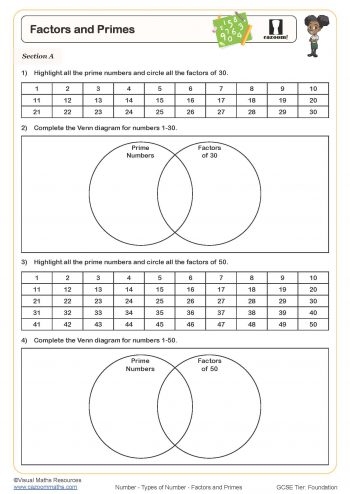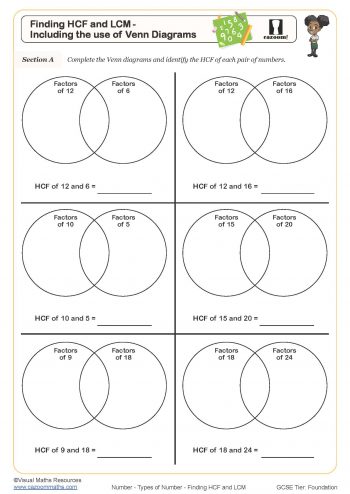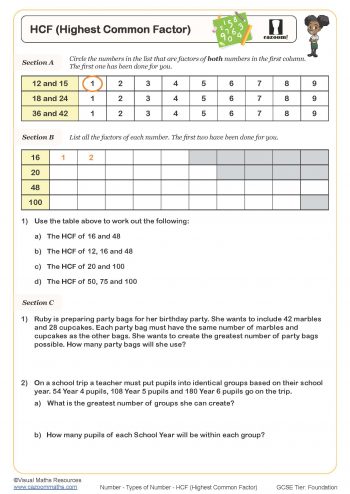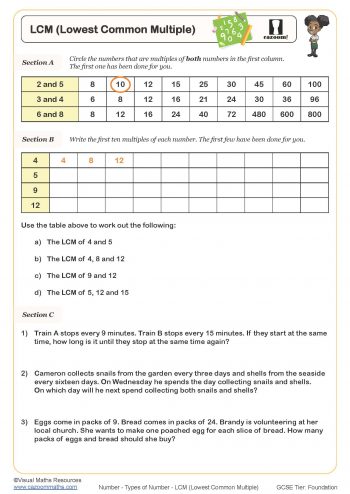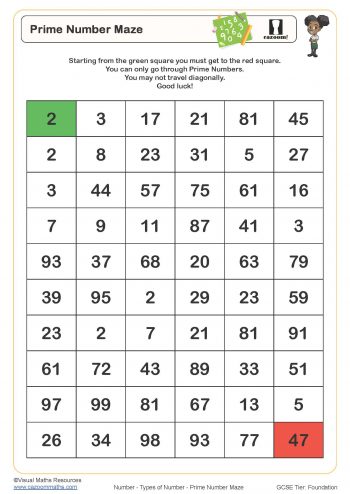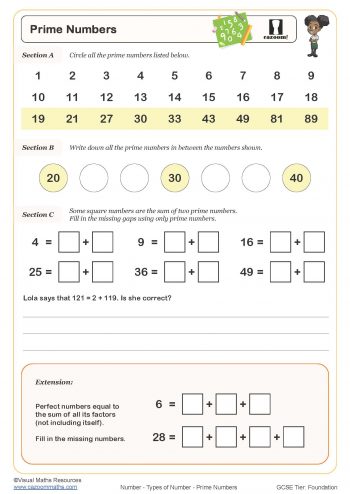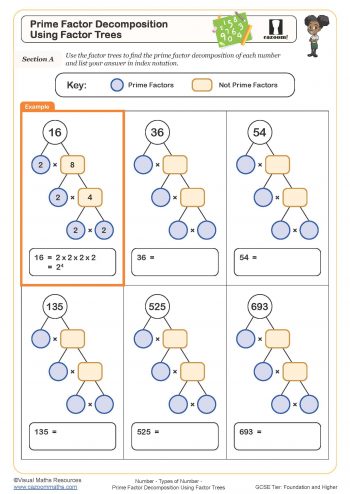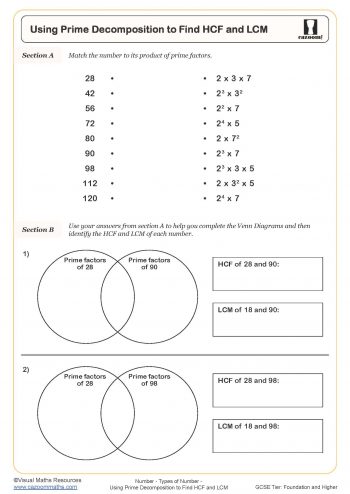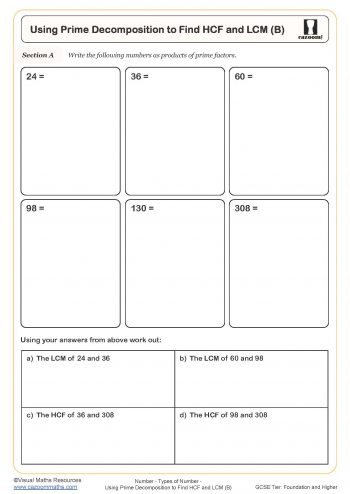Types of Number Worksheets
Maths Worksheets / Types of Number Worksheets
We’ve created a comprehensive set of Types of Numbers Worksheets in PDF format, complete with answers, to help young learners explore various number-related concepts. Cazoom Maths worksheets are a great resource for key stage 3 and 4 students to understand numbers, such as factors, primes, highest common factor (HCF), lowest common multiple (LCM), Venn diagrams, prime number mazes, factor trees and prime factor decomposition to find HCF and LCM. Our worksheets enable students to acquire the knowledge and practice required to be proficient in identifying different types of numbers. We help make learning enjoyable through our various Types Of Numbers Worksheets. Each worksheet has and separate answer sheets for convenience. In mathematics, numbers are one of the most basic areas of study; thus, our printable Types Of Numbers Worksheets aim to make the process fun and practical. Our interactive worksheets will help your students develop a better understanding of numbers.
PRINTABLE TYPES OF NUMBERS WORKSHEETS PDF WITH ANSWERS
Check out and download our Types Of Number Worksheets, which will improve your student’s knowledge of various mathematical calculations prime and composite numbers, factors, prime factors, whole numbers, divisibility rules, and lowest common multiples. They will also learn about listing multiples, square numbers, and positive entire numbers with examples. These worksheets are created in easy-to-download PDF format, include answers, and are designed to help your students better understand types of numbers. These types of number worksheets are excellent resources that will make learning fun and exciting, helping young learners improve at solving various critical mathematical problems.
Understanding The Concept Of Types Of Numbers
Different numbers in mathematics have different characteristics. For instance, prime numbers like 2, 3, 5 and 7 are numbers that cannot be divided by any other number without leaving a remainder. A square number is one that results from multiplying a number by itself; for example, 4 (2×2) or 9 (3×3). Cube numbers are numbers which are produced after multiplication three times, for example, 8 (2x2x2). Conversely, squaring is the opposite of finding square roots; thus, the square root of 9 is equal to three. In our daily lives we use decimal numbers, such as the twenty-nine cents of 0.29 or the two and one-half units in 2.5. Rational numbers are those which can be expressed as fractions, while irrational ones like π cannot be represented exactly and have non-terminating decimal expansion. Whole numbers are integers that do not have any fractional parts so they are inclusive of ones like two and fifty. These different types of numbers play important roles in both simple and complicated maths computations.
Importance Of Learning Types Of Numbers
The study of different numbers is akin to discovering the various types of building blocks in mathematics. Real numbers form a large class of numbers that includes all sorts of them, and such knowledge helps us count, measure and solve problems through multiple approaches. For example, whole numbers (1, 2, 3, …) are the foundation for counting things. In a maths worksheet, odd numbers like 1, 3 and 5 allow us to make sense of patterns of shapes or answer questions which arise. Prime numbers like 2, 3 or even 7 are the ‘solo artists’ because they can only be divisible by themselves or one. The area amounts to a square number, which might be either four or nine. Additionally, cube numbers (8 from ‘2x2x2’) come up with three-dimensional shapes often. A square root undoes a square, meaning that we can find out what it originally was. Decimal numbers (e.g., 1.5) allow precision, while rational and irrational ones show that not everything can be expressed as an exact fraction or simple decimal figure. We can learn how to use each type better by understanding their worth so as to apply them in life differently.
Using Types Of Numbers In Real Life
We use various forms of numbers in real life, often without even realising it. Real numbers help us count money, measure recipe ingredients, and determine how long a journey will take. When splitting an apple pie among friends, you use rational numbers—like half an apple pie or three-quarters. We also use odd numbers in everyday life, like setting an alarm for 7 a.m. or buying five apples. If you’re into gardening, understanding square roots can help determine the area you’ll need for planting. Factors come into play when organising things into equal groups, and positive integers are used for counting items like books on a shelf. Cube numbers might be less common, but they’re essential when considering volume, like figuring out how much soil you need for a planter box. On the other hand, irrational numbers like pi come up in more complex situations, like calculating the circumference of a circle. Whether you’re answering a tricky question on a maths worksheet or just figuring out your daily activities, numbers in their different ways and forms are fundamental.

